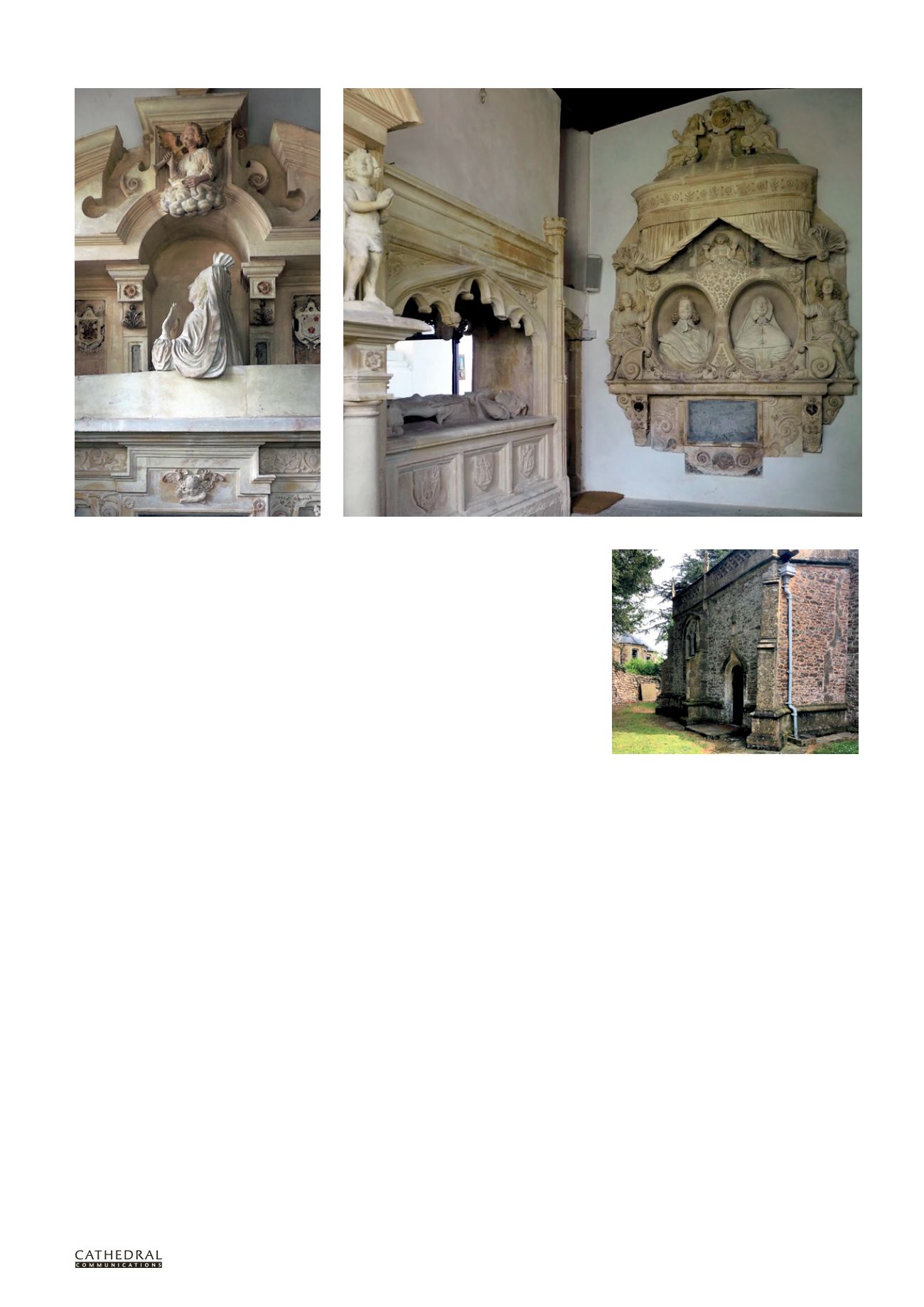

BCD SPECIAL REPORT ON
HISTORIC CHURCHES
24
TH ANNUAL EDITION
17
The monument to Sir Edward and Lady Francis after conservation and with the new lime plaster in place
The north and west elevations of the Rodney Chapel
showing the lime mortar pointing on the west
elevation and the lowered ground level, now re-turfed
and sloping away from the base of the stonework
However, there was an issue where the
two drains meet: the drain from the west
end of the chapel and the drain from
the nave converge in a Y section. In the
event of leaves or debris going down the
drain there is a strong possibility that
they will cause a blockage because this
is a non-standard join. The PCC was
advised of the importance of regularly
checking the mesh installed just below
the downpipe to catch leaves and debris.
The area of grass between the west
wall of the Rodney Chapel and the
porch was piled up with debris and soil
which was considered to be a possible
trap for rainwater to track back into the
chapel. The turf was lifted and the debris
removed to slope the ground away from
the chapel. The turf was then reinstated.
The improvements to the internal
environment had to take into account
how the chapel was used. One of the
chapel’s important functions for the
community was to act as a changing
room for the choir. An electric socket
had been installed immediately below
the monument to Sir Edward and Lady
Francis on the west wall to plug in a
heater while the choir changed. This is
an area where salt efflorescence with
associated blistering and spalling of the
stonework was present. The sharp rise in
temperature in the microclimate caused
by the heater would have accelerated
salt activity through this section of the
wall and monument. In addition, a heavy
velvet curtain had been hung on the
north side of St Thomas for privacy and
Detail of the Anne Lake monument
to prevent drafts, which reduced the
airflow around the monument.
The socket and electrics were
relocated from the west wall to the north
wall near the door with advice to raise
the temperature only to the minimum
required. The velvet curtain and fixings
were removed and the surface of the
monument repaired. The parish was
advised to invest in a folding screen
which could be installed before and for
the duration of services.
The internal wall around the
monument to Sir Edward and Lady
Frances Rodney had an extremely hard
ash plaster. After discussion with the
architect, this was removed and replaced
with a lime plaster made from lime putty
which had been aged for 20 years, and it
was then given three coats of limewash
toned to match the surrounding walls.
The use of aged lime putty produces the
most plastic mix, so the plaster adheres
extremely well and is less likely to crack.
Its purpose was to reduce the movement
of moisture and soluble salts through
the porous stonework of the monument
and to slow down the decay mechanism
associated with loss of surface and
historic pigment. The new lime plaster
also creates a large surface area through
which vapour, moisture and salts can
move freely to the external elevation.
The Rodney Chapel’s environment
is complex and although critical
improvements have been made towards
stabilising and better understanding
the internal environment, it will be
necessary to continue to monitor the
moisture levels. The parish was advised
to install an environmental monitoring
system in the chapel to monitor it over
the long term. The information can be
collated to gather a more comprehensive
overview of the performance of the
building envelope in order to develop
a robust strategy to manage the
environment of this delightful church.
SALLY STRACHEY
is managing director
of Sally Strachey Historic Conservation Ltd
(www.sshconservation.co.uk). She trained
as an art historian and was awarded
an ICCROM fellowship at the Bonn
Conservation Workshops in 1984. She was a
founder member of the UKIC stone section
committee and of the Nimbus Conservation
Group. She is a CPD reader for PACR
accreditation and an HLF Mentor, and she
lectures at the universities of Cardiff and Bath.


















